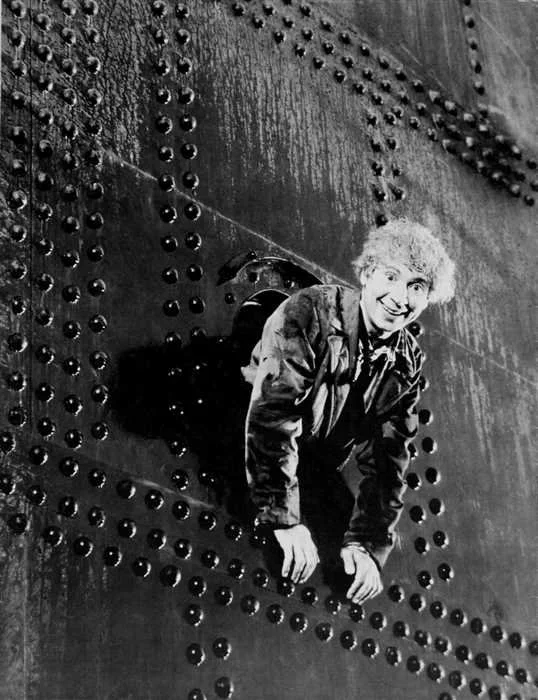shop talk: jargon and jabberwocky
A frequently revised and updated glossary of art business terminology and, sometimes, blasphemy.
Raphael Montanez Ortiz. Dance 22, video, 1993.
Art fair is a sales event (or trade show) organized by an active live marketing company for which fee-paying galleries and other art-related businesses offer merchandise directly to customers à la trunk shows. In 2024, 380 art fairs were expected globally.
Art fair art typically refers to artwork created specifically for or commonly shown at commercial art fairs. It often has certain characteristic features, including attention getting visual elements, broad buyer appeal, commercial viability, and ease and transport.
Art world is a time-worn, mischaracterization of the art sector. It indiscriminately conflates social and cultural aspects with business activities.
Appraisals are property valuations typically used for insurance and taxation purposes. All property valued at more than $5,000 requires certification by a professional appraiser who has completed a course approved by The Appraisal Foundation.
Blockchain is a decentralized ledger system that allows transactions to be verified and recorded across a network of computers, ensuring that each transaction is secure and transparent. Blockchain technology is immutable. Once a transaction is recorded on the blockchain, it cannot be altered or deleted.
Buy one; give one (BOGO) is a questionable sales tactic used to sell high-demand works to potential buyers. Such conditional transactions reserve one work for the buyer and a second one for an institution. These deals are often thorny, especially if an institution does not want an artist’s work or cannot specifically select a work for its collection.
Certificate of authenticity is a paper or digital record confirming the authenticity of a work of art.
Commissions are percentage-based fees charged by a variety of art market participants, including advisors, appraisers, and dealers. They are often charged on both the buy and sell sides of art transactions.
Consumer Use Taxes are self-assessed by the purchaser of items where the vendor did not collect sales tax. The purchaser remits this tax directly to the taxing jurisdiction.
Cost refers to the amount of money, time, or effort required to do something. There is no correlation between cost, price, and value.
Cryptocurrency is a decentralized digital payment system using blockchain technology for secure transactions, offering privacy and global access without a central authority. NB: Cryptocurrencies are not backed by any physical assets or central banks.
Curate (from the Latin "curatus," meaning "to care for") originally meant to select and organize (artistic works) for presentation in something, such as an exhibit, show, or program. Since the 2000s, the terms “curate" and "curation" have experienced significant semantic broadening to the point they are hackneyed. Both terms are now commonly used in many contexts beyond museums and galleries, including retail curation and content curation on social media platforms.
Dealer can be used to refer to a gallerist or a private dealer who holds art inventory, alone or in partnership with others.
Discounts are often extended to buyers in both the primary and secondary art markets, excluding auctions, which are the most regulated segment of the art sector. Ten percent is a typical baseline discount, which has become so prevalent it is expected even by novice buyers. Recurring customers often negotiate more aggressive discounts, particularly in soft markets.
Droit de suite is a French term that governs Artist's Resale Rights, which are granted to artists or their heirs, in some jurisdictions, to receive a fee on the resale of their works of art. This is in contrast to the American first-sale doctrine, where artists and their estates do not have the right to control or profit from subsequent sales.
Gallery is typically a brick-and-mortar business retailing art objects and related products. They frequently have an online sales presence. Increasingly, galleries have expanded into luxury lifestyle and experiential businesses which undermine or support the gallery’s core business.
Global representation implies that a gallery or dealer has exclusive contractual rights to represent and distribute works by living artists or their estates. This concept does not apply to works traded through alternative sales channels in the secondary market.
Global markets (or globalization) represent a more integrated approach to sales and marketing, where companies treat the world as one large market. They standardize their products, marketing strategies, and operations across countries, with minimal local adaptation. The Internet has aided the notion of globalization, but no art enterprise is truly global.
Hidden expenses are the incremental costs that art buyers and sellers may incur. These expenses invariably include fine arts or homeowners’ insurance, but they may also include framing, packing, restoration, storage, and transportation.
Immersive experiences are a type of activity or entertainment that makes a participant feel like they are part of a different environment, blurring the lines between reality and fiction. Immersive experiences can be created using technology like virtual reality (VR) goggles or physical environments like art fairs and theme parks.
Joe Graham-Felsen. Invisibility Cloak, 2011, digital print.
International markets (or internationalization) is when businesses operate across national borders, but they adapt their approach for each country. Companies typically maintain distinct strategies, products, and operations for different countries and regions, recognizing and accommodating local preferences, regulations, and business practices. This includes variable practices for art fairs.
Institutional critique as defined by the Museum of Modern Art, is “A form of conceptual art, which emerged in the late 1960s, centered on the critique of museums, galleries, private collections, and other art institutions. Artists working in this vein use a range of strategies to expose the ideologies and power structures underlying the circulation, display, and discussion of art.”
Price is the amount of money expected, required, or given in payment for something. There is no correlation between cost, price, and value.
Primary art market is where new artworks are sold for the first time. This typically involves direct sales from artists' studios to collectors; galleries representing artists and selling their new works; art dealers working directly with artists to place new pieces; art fairs featuring new works, and commissioned pieces created specifically for buyers.
Provenance is the chronology of an object’s origin, ownership, custody, or location. Provenance is essential for demonstrating authenticity and is established with written documentation and images.
Right of first refusal is a contractual right that gives the gallery or dealer an option to repurchase an art asset before the current owner can sell it via an alternative sales channel. The dealer can match or decline to match an offer for the asset. If the dealer declines, the seller can consider other offers.
Roster is essentially the core group of artists (living and dead) that defines a gallery's artistic identity and commercial strategy in the contemporary art market. Rosters evolve over time as galleries add or remove artists, particularly noncommerical ones.
Sales taxes are inescapable. They are consumption taxes on the sale, transfer, or exchange of goods or services. In most jurisdictions, taxes are calculated, added to the net sales price, collected by the seller, and remitted to the taxing jurisdiction. Other associated expenses may be included in the net sales price.
Secondary art market involves the resale of artworks that have previously been purchased via any sales channel, including, auction houses; art dealers specializing in resale, private sales between collectors; online platforms facilitating resale of works (ideally authenticated), and gallery resales of works from their collectors.
Supermarket gallery is an antiquated term used to describe art galleries or exhibition spaces that prioritize marketability and commercial appeal over artistic depth or critical exploration. The term generally implies that such galleries reduce art to a consumer product, much like standardized, interchangeabl goods in a supermarket, rather designed for mass consumption rather than unique artistic expression.
Tariffs are taxes imposed by a government of a country that imports or exports goods. Import duties can also be a form of regulation of foreign trade and policy that taxes foreign products to encourage or safeguard domestic industry. They can also impose costs, and create higher prices for consumers.
VAT (value-added tax) is a cumulative consumption tax, which is levied on the value added at each stage of a product's production and distribution. While VAT is often compared with a sales tax, it is an indirect tax. Specific goods and services are typically exempted in various jurisdictions.
Valuations are estimates the Fair Market Value (FMV) of an artwork. FMV is determined through qualitative analyses by art specialists and advisors. They can be used for insurance purposes.
Value is the amount of money something is worth, or the worth of something in terms of importance or utility. There is no correlation between cost, price, and value.
VIP (or V.I.P.) is an abbreviation for very important person who is typically given free entrance to art-related functions, including fairs, and, sometimes, other privileges or swag (promotional products and branded merchandise.) At most fairs, VIP’s are target clients, artists, industry players, critics, celebrities, and their guests who are given a first or early look at the works for sale. There is little correlation between VIP status and sales.
Zombie formalism is rather ludicrous term to describe a trend in contemporary abstract painting. It was used because "zombie" works appeared alive (technically competent), but lacked a true animating artistic spirit or deeper meaning.

